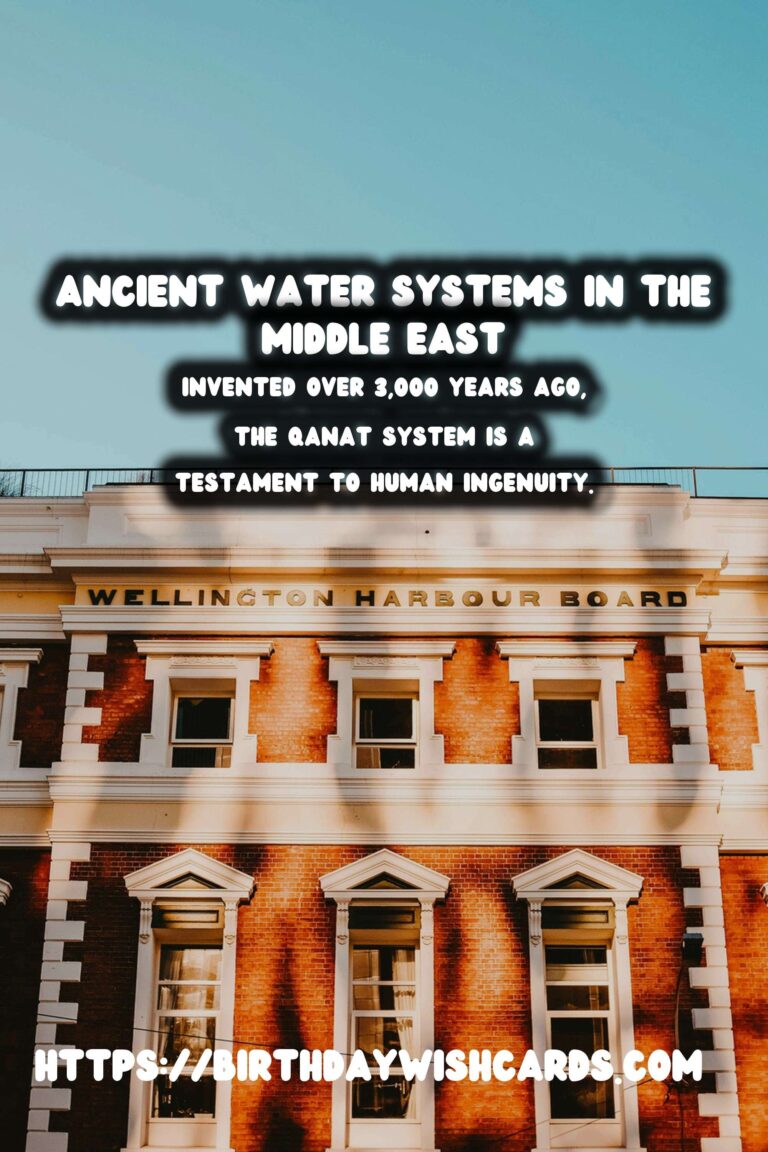
The Middle East, known for its rich tapestry of history and culture, is a treasure trove of ancient innovations. Among these, the complex water systems developed by ancient civilizations stand out for their ingenuity and sustainability.
Despite the largely arid landscape, the people of the Middle East managed to devise remarkable techniques to manage and distribute water efficiently. This article delves into some of the lesser-known ancient water systems that continue to intrigue historians and engineers alike.
The Qanat System: An Ingenious Irrigation Technique
Invented over 3,000 years ago, the Qanat system is a testament to human ingenuity. Originating in ancient Persia, modern-day Iran, this underground channel system was designed to transport water from aquifers in the mountains to arid plains. The system uses gravity to allow water to flow over long distances, thus enabling agriculture and settlement in otherwise uninhabitable areas.
Qanats were constructed by digging shafts into the ground to access underground water sources. From there, gently sloped tunnels were dug to convey the water to the surface, using minimal evaporation and loss. This system not only conserved water but also displayed a deep understanding of hydrogeology and engineering.
The Shaduf: A Simple Solution to Water Lifting
The Shaduf, a hand-operated device for lifting water, was used extensively across the Middle East. This seemingly simple technology was vital for irrigation and agriculture. Comprising a long beam balanced on a vertical pivot, a Shaduf could easily lift water from deep wells and channels to irrigate fields.
This tool’s widespread use demonstrated the understanding of basic physics and mechanical advantage. It formed an essential part of everyday life in ancient Egypt and Mesopotamia and continues to be used in some rural areas today.
Roman Aqueducts: Expanding Civilized Reach
The ingenuity of the Roman aqueduct systems has often overshadowed other local innovations; however, their influence reached as far as the Middle East. These aqueducts transported water across long distances, using precise gradients and gravity flow.
What made Roman aqueducts particularly noteworthy was their blend of aesthetic and functional architecture, seen in structures such as the iconic Pont du Gard. In the Middle East, cities such as Palmyra and Jerash benefited greatly from aqueducts, fostering urban growth and economic development.
The Advanced Nabataean Water Control System
The Nabataeans, known primarily for the wondrous site of Petra in Jordan, also excelled in water management. They developed a sophisticated system of dams, cisterns, and conduits to control and distribute scarce water resources.
The Nabataeans understood the landscape’s topography and used it to their advantage, storing water during the rare rainy months and then utilizing it throughout the year. Their systems were so effective that Petra thrived as a major city in the desert for centuries.
Conclusion
The ancient water systems of the Middle East serve as enduring symbols of human ingenuity and adaptation. Each system, whether the underground Qanats or the grand Roman aqueducts, uses innovative techniques that remain relevant today as humanity seeks sustainable solutions to water scarcity worldwide.
Discovering these lesser-known systems highlights not just the engineering prowess of our ancestors but also their resilience and ability to thrive in challenging environments.
The Middle East, known for its rich tapestry of history and culture, is a treasure trove of ancient innovations. Invented over 3,000 years ago, the Qanat system is a testament to human ingenuity. 
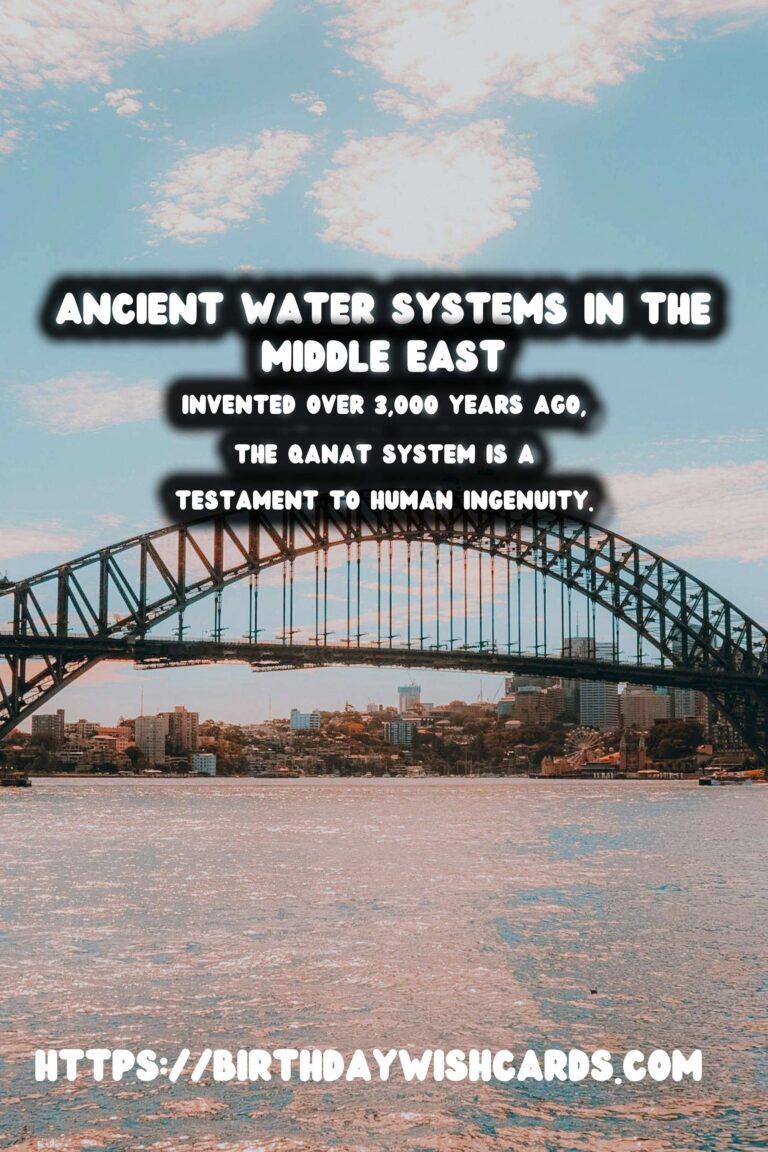
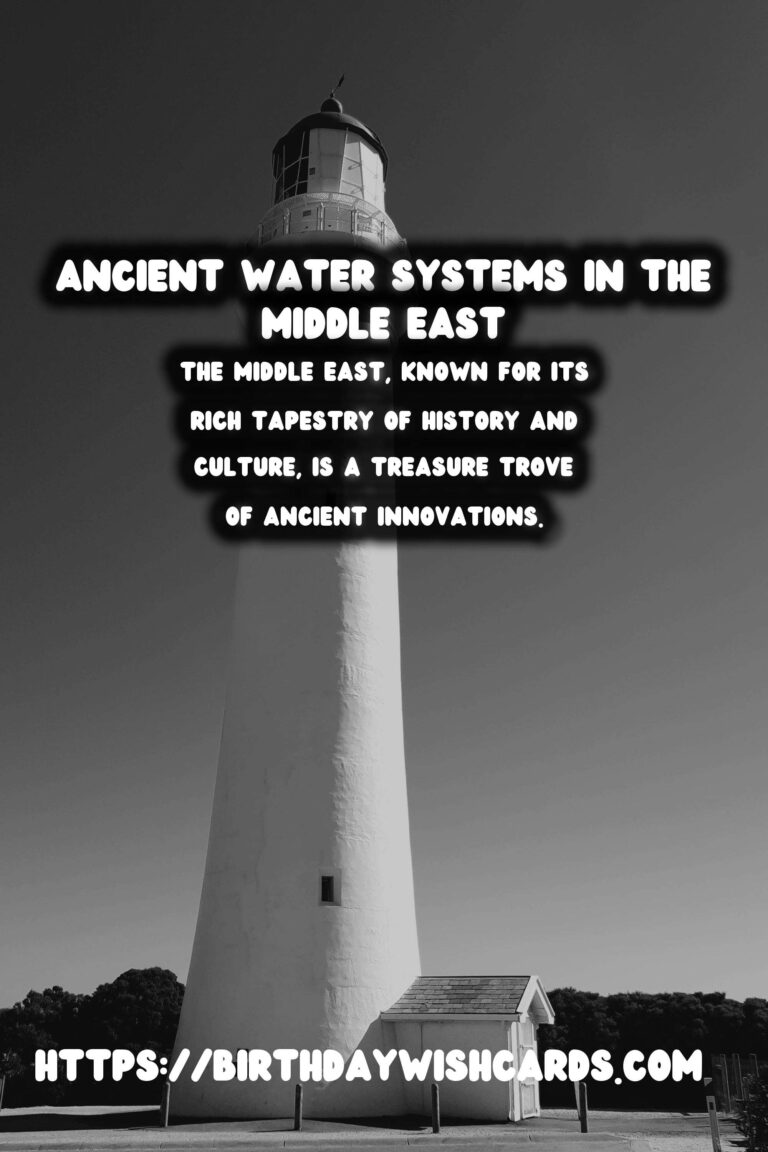
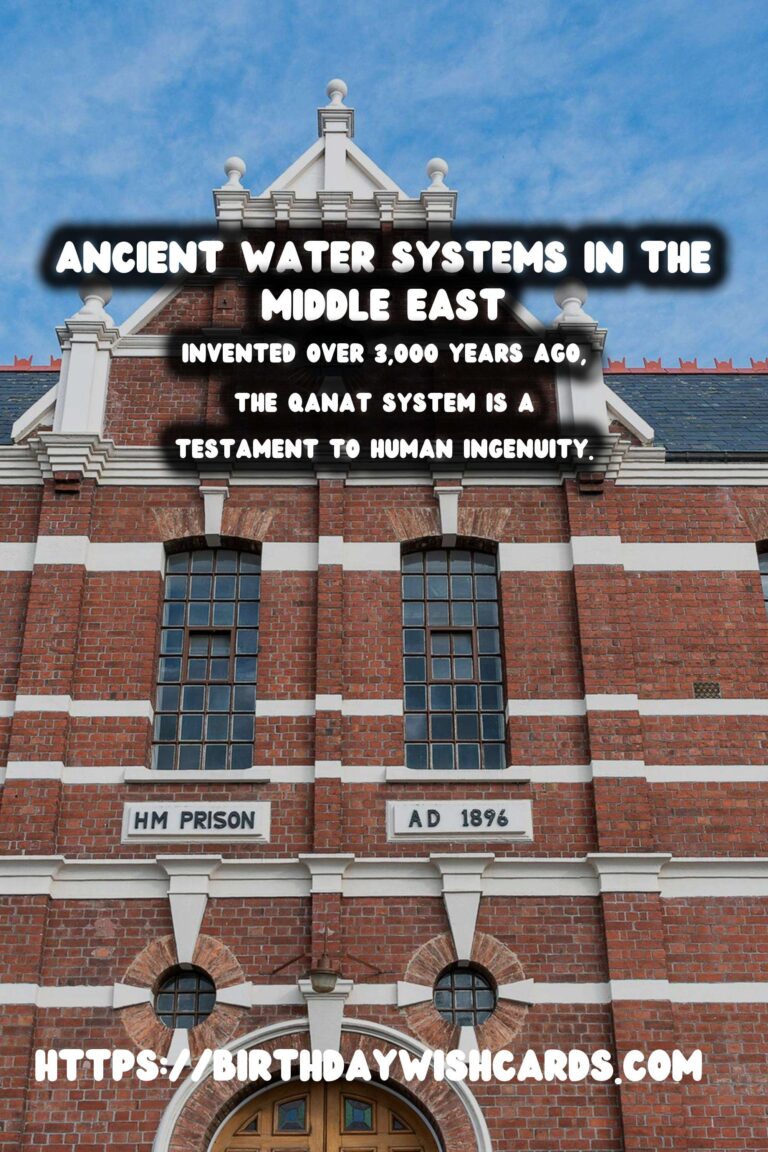
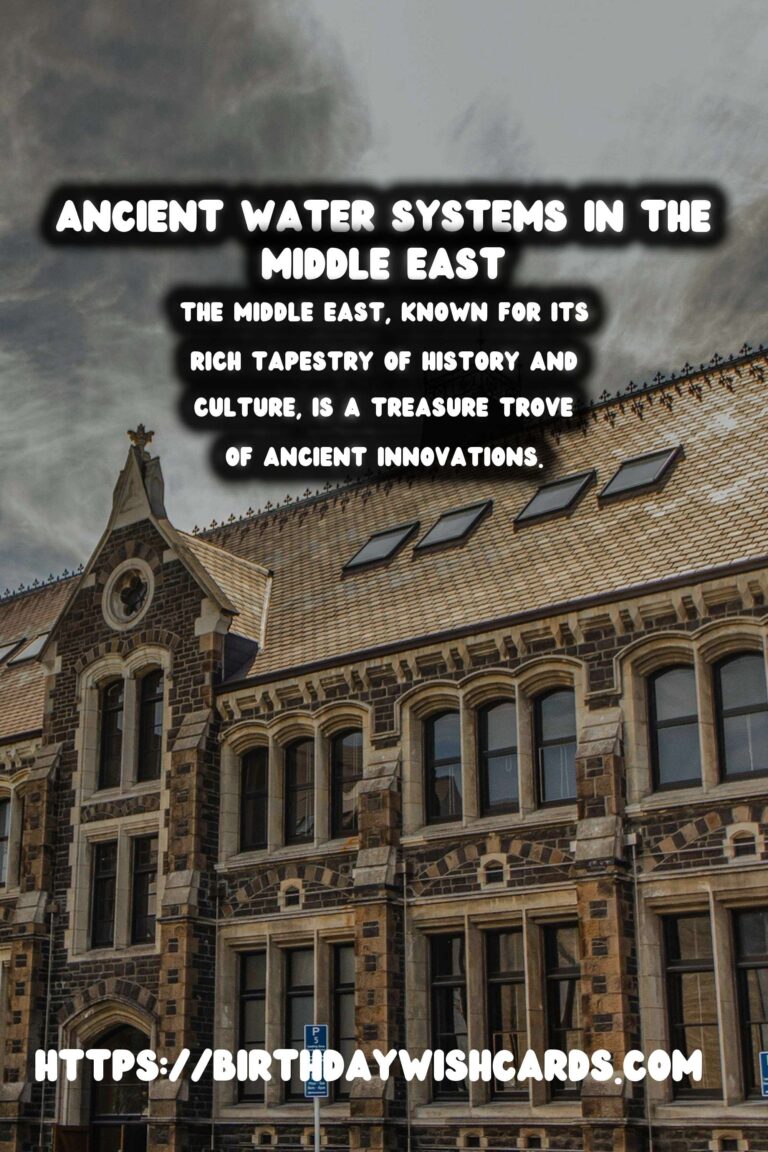
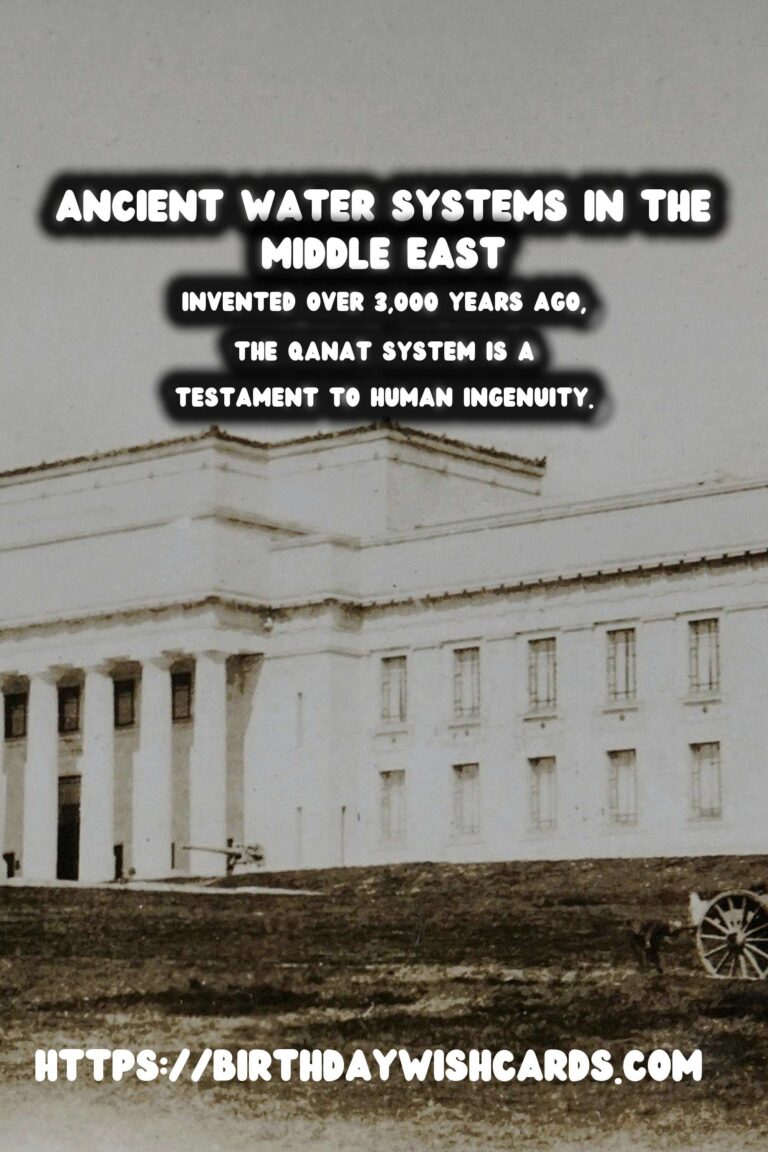
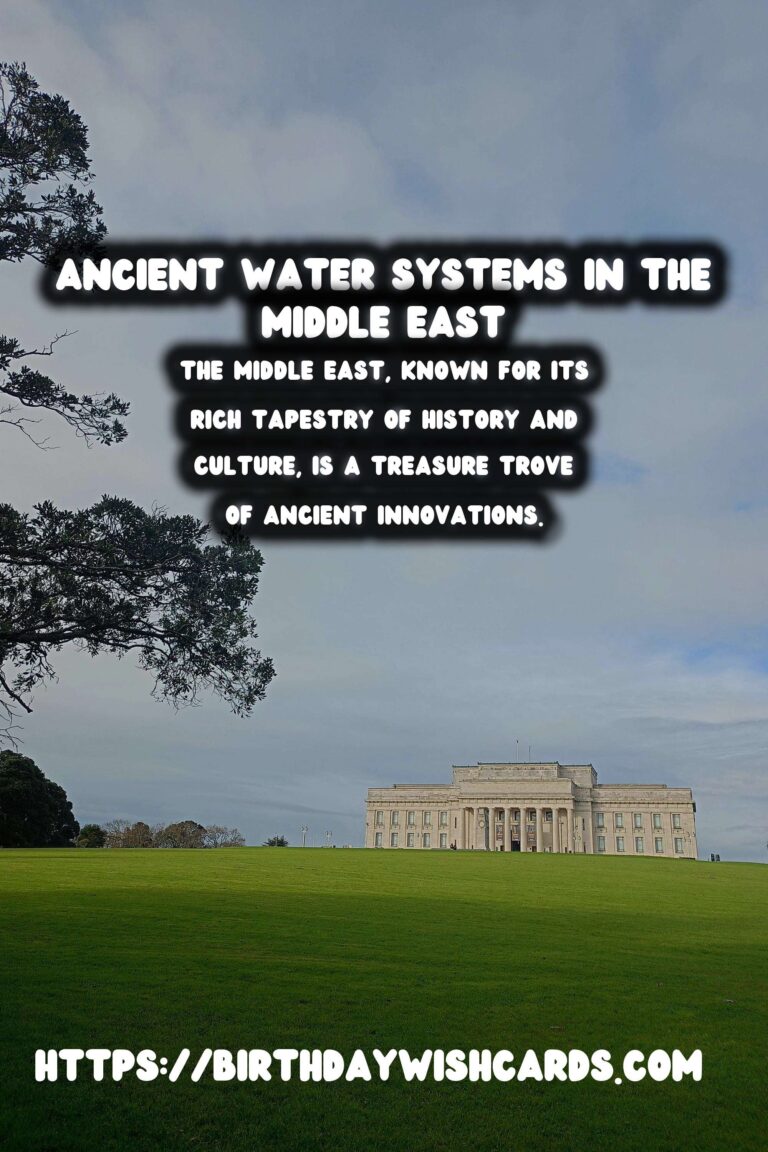
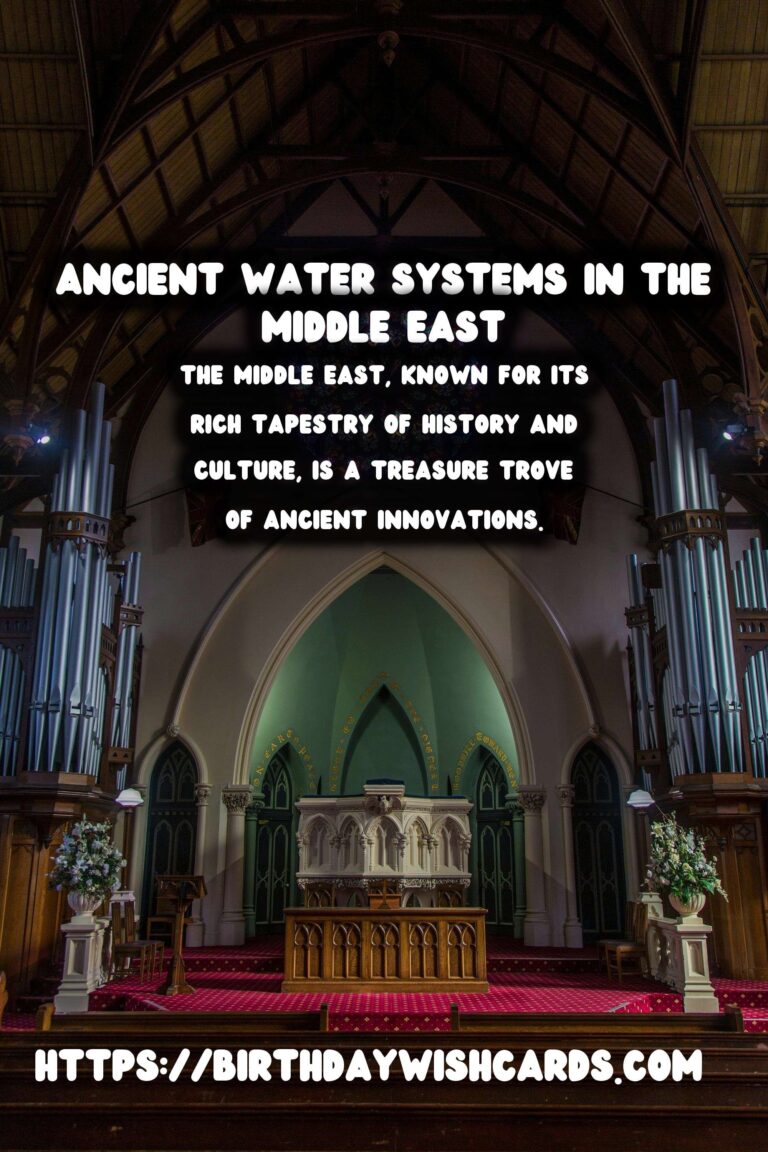
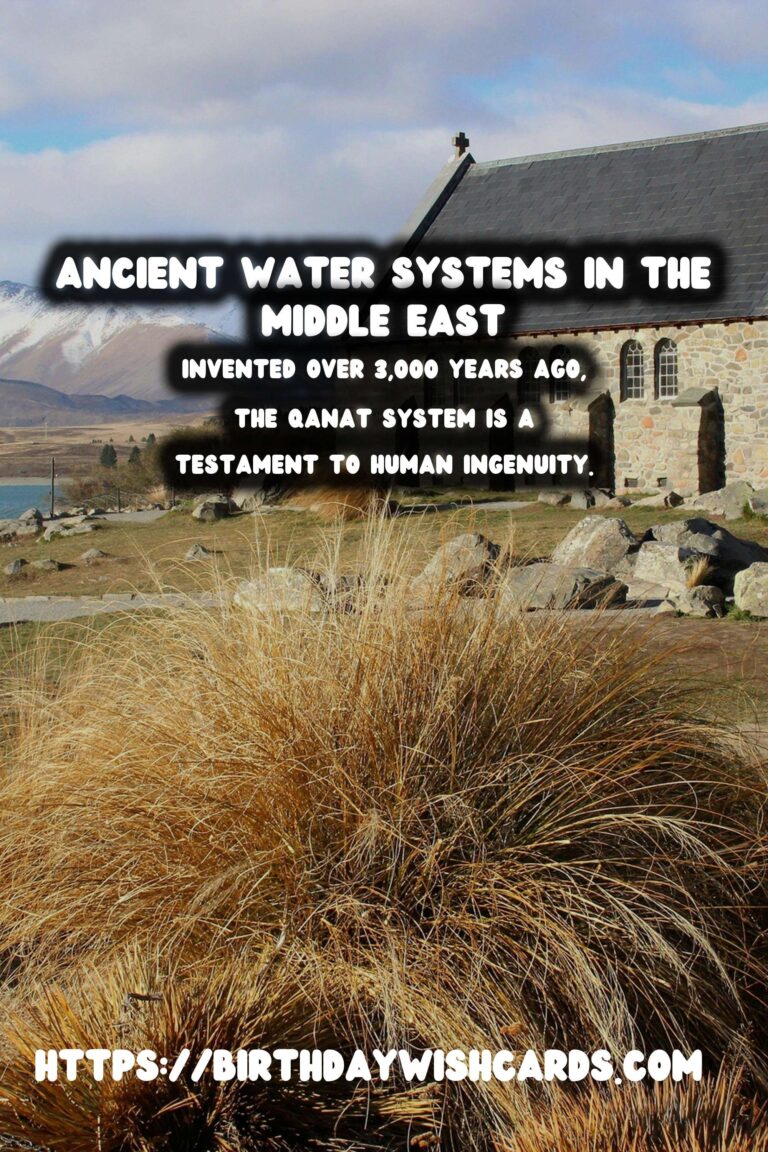
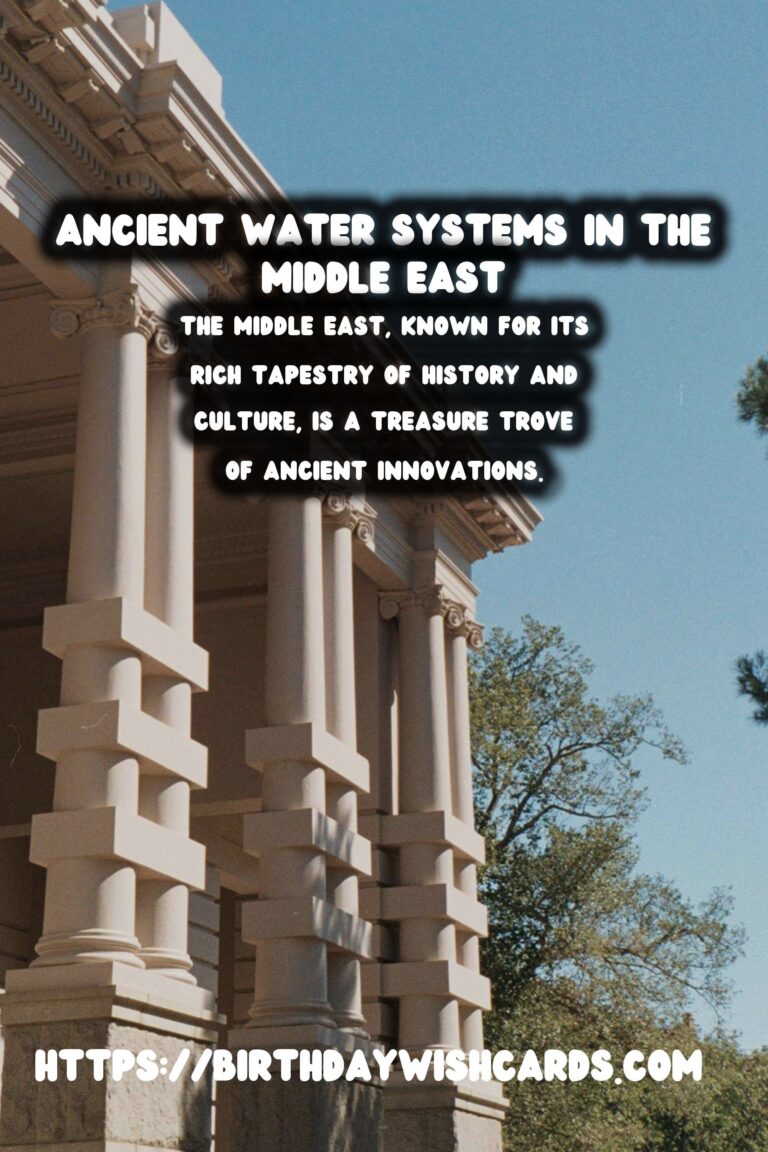
#AncientWaterSystems #MiddleEastHistory




